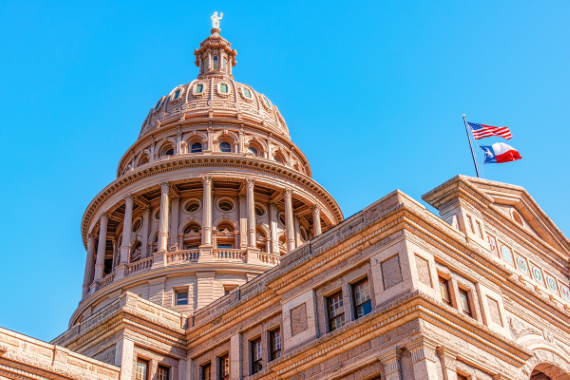What the 'Stay Home - Work Safe' Order Means For You
Published Mar 25, 2020 by Maggie Martin
The Partnership hosted an online information session about the "Stay Home - Work Safe" Order on March 25. It's part of the organization's COVID-19 Houston Business Forum, a digital series providing the latest information and analysis on the crisis and its economic impact.
How We Got Here
President and CEO Bob Harvey kicked off the session by explaining the details of the order and what it means for Houston businesses.
Harvey explained the Partnership has been in regular communication with Harris County Judge Lina Hidalgo's and Houston Mayor Sylvester Turner's offices to ensure that employers in our critical industries were considered while also balancing the extraordinary need for citizens to avoid public interaction.
Harvey referenced a model from UTHealth that suggests by taking aggressive steps now, the peak of cases in Houston is forecast to happen in a couple of weeks. But then you have to consider we will still need aggressive measures for some time as we move down the back side of the slope.
He said the UTHealth model suggests the longer Houston had waited to take aggressive action, the later we would hit the peak of infection and number of cases would be extraordinarily high (in the many tens of thousands). Harvey explained that's why Houston leadership moved to take action now.
The Order
Judge Hidalgo, in coordination with Mayor Turner, issued the mandatory order, which took effect at 11:59 pm on March 24, to preserve public health and safety in Harris County in the face of the coronavirus COVID-19. The order is now in effect through April 30. Click here to read the official order.
Harvey said the industries and related jobs that are exempted as outlined by the U.S. Department of Homeland Security National Cybersecurity and Infrastructure Security Agency (CISA) can be found here. Harris County's order also exempts NASA, the Port of Houston, Houston airport and airline activities and some professional services. See the full list here.
Harvey encouraged businesses and employees to read the full order carefully to understand what it means for them. "Even if you're an exempted company, you should determine which employees are absolutely essential who need to report in," said Harvey.
He said based on the UTHealth model, there's no expectation this order will be lifted by April 3, and that businesses should be thinking in terms of months - not weeks - when planning for all contingencies.
Applying for an Exemption Waiver
Businesses in industries not exempted by the order may apply to the County for an waiver. Exemption requests must provide evidence that the business is essential to promoting the general welfare of the residents of Harris County. The County is currently developing an application process which will be made available at ReadyHarris.org.
Only employees deemed absolutely essential are allowed to report into these sectors
Enforcement of Order
Harvey said while he encourages Houstonians to behave responsibly, law enforcement agencies within Harris County are authorized to enforce the order with a fine that doesn't exceed $1,000 or a jail term that exceeds 180 days.
Work Safe
Harvey laid out the 10 principles the Partnership has established for companies in industries exempted from the Stay Home-Work Safe order. They're part of the Partnership's COVID-19 Houston Work Safe Company program, which is to encourage and acknowledge companies taking steps to ensure a work safe environment.
Harvey encouraged exempt companies to download the badge to identify their 'Work Safe' business on their websites and social media. Download a JPG of the Work Safe badge here and a PNG here.
Exempt companies can also share this sample letter with their essential employees.
How Order Will Impact Houston's Business Community
Harvey said the steps taken now are appropriate to avoid Houston facing a similar situation such as New York City and Northern Italy are facing. But he added these steps are going to be significant for Houston.
"We're dealing with the combined effects of COVID-19 and the collapse of oil prices," said Harvey.
He said Houston's recovery phase is still a ways off and that businesses need to think about the actions they're taking now to avoid more aggressive actions further down the road.
The Greater Houston Partnership's COVID-19 Houston Business Forum is a digital series providing the latest information and analysis on the crisis and its economic impact. These presentations with local experts and business leaders are being conducted via teleconference.
Visit the Partnership's COVID-19 Resource page for updates, guidance for employers and more information. And sign up for daily email alerts from the Partnership as the situation develops.
 The Houston Report
The Houston Report



















